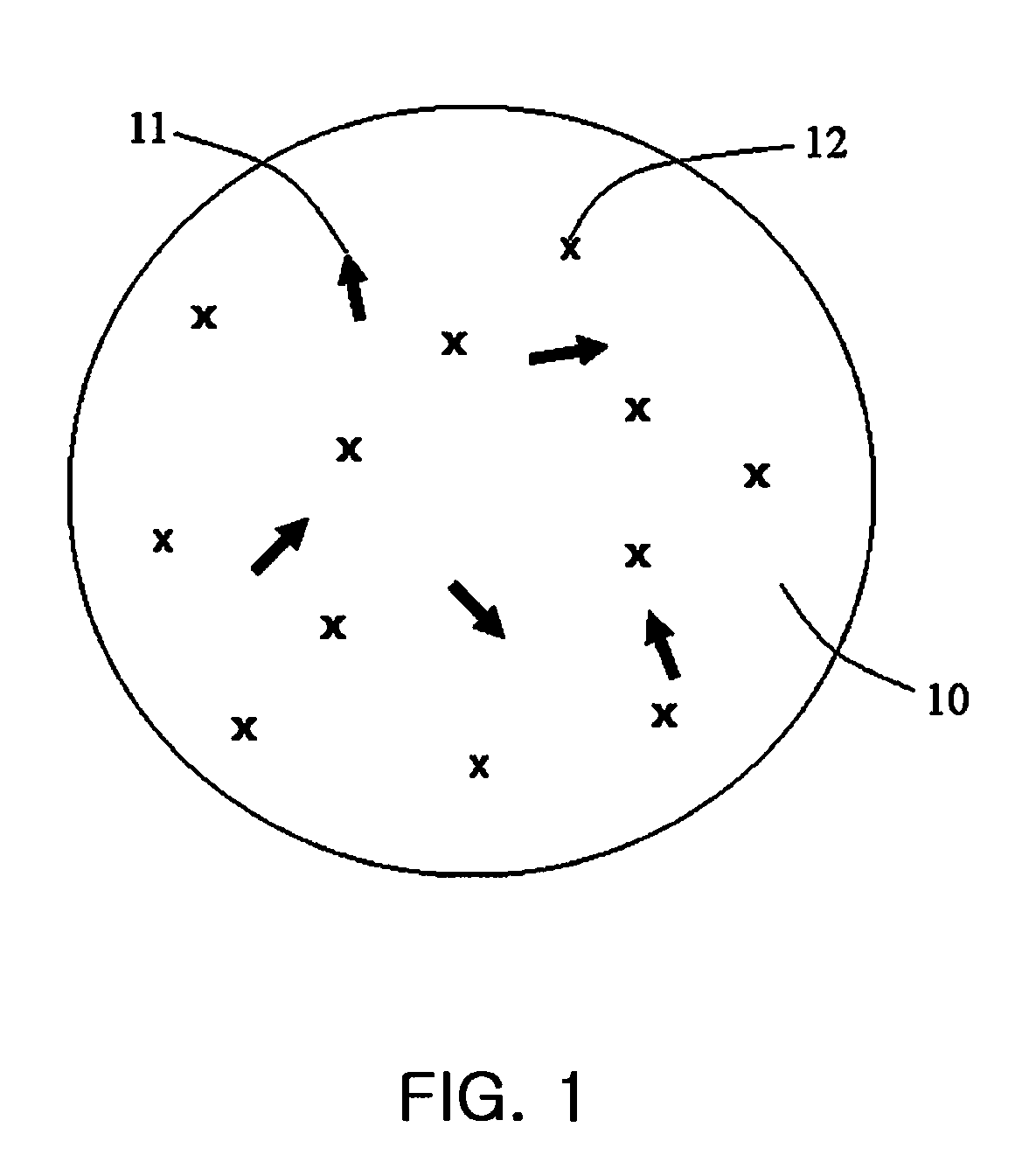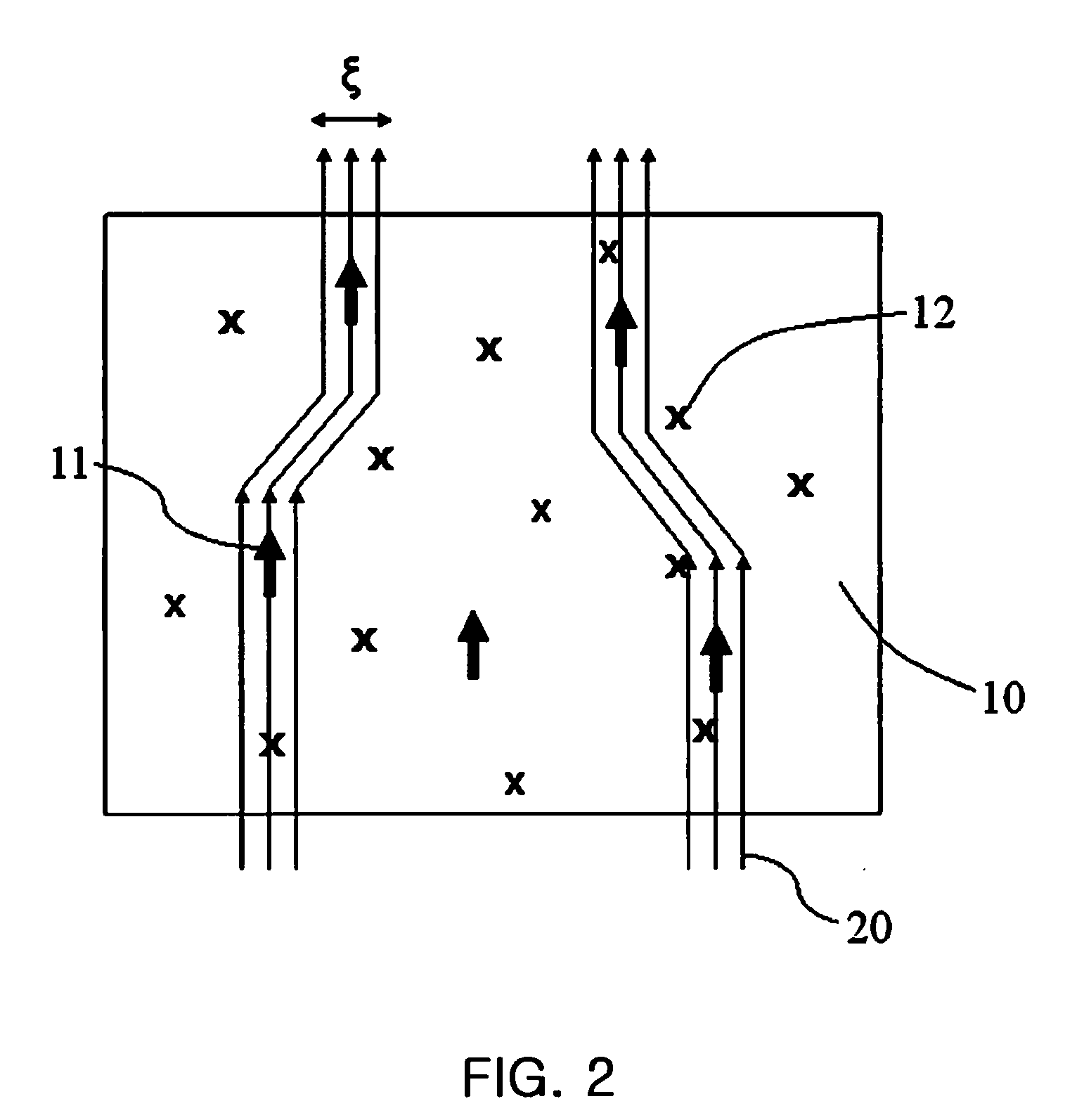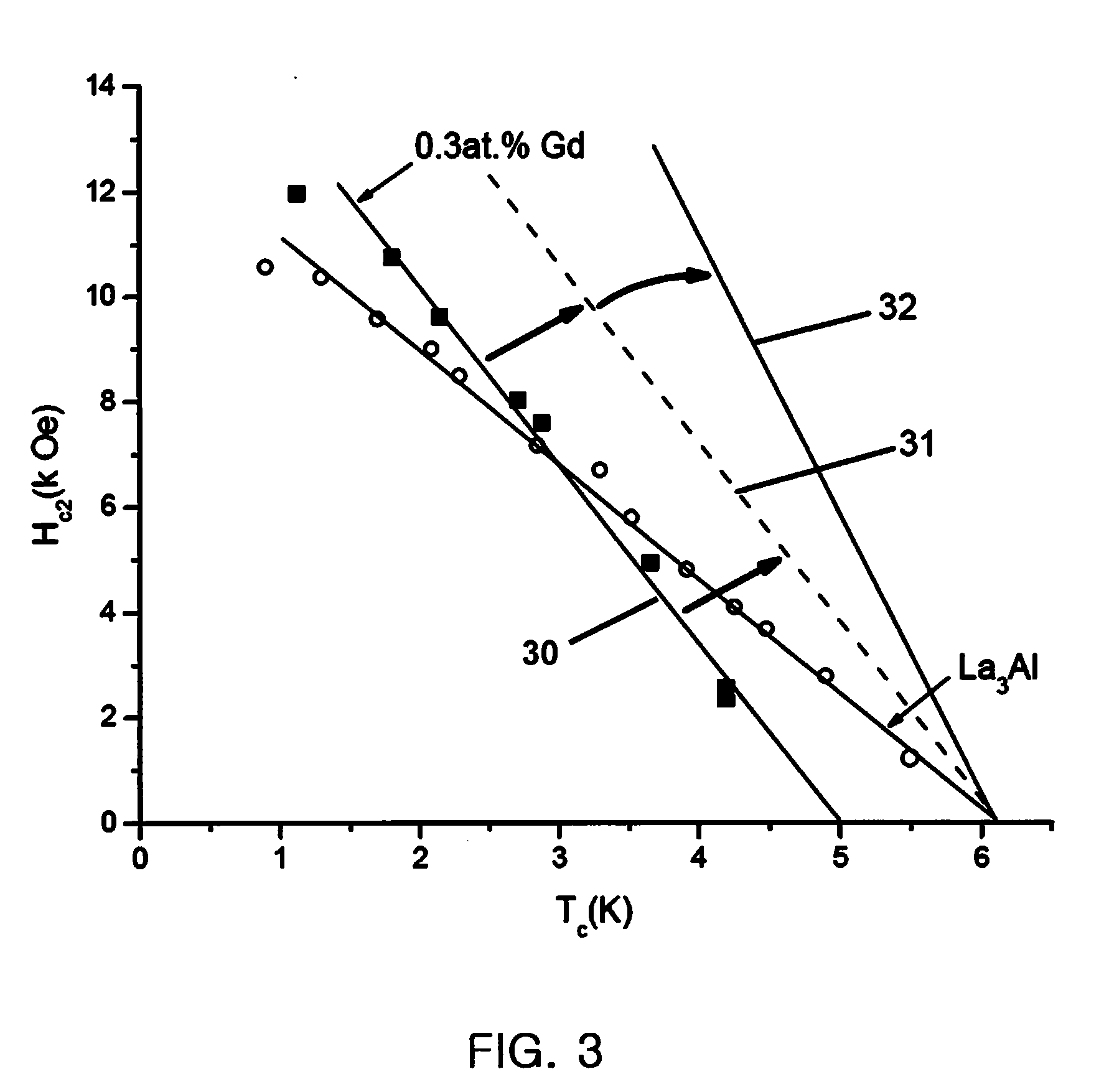Superconductor with enhanced high magnetic field properties, manufacturing method thereof, and MRI apparatus comprising the same
a high-magnet field, superconductor technology, applied in the direction of thin material processing, magnetic measurement, instruments, etc., can solve the problems of destroying the superconductivity near the pinning center, not showing good pinning properties, and not having reliable microscopic theories
- Summary
- Abstract
- Description
- Claims
- Application Information
AI Technical Summary
Benefits of technology
Problems solved by technology
Method used
Image
Examples
Embodiment Construction
[0022]Embodiments of the present invention can be generally characterized as capable of providing a method of enhancing the pinning properties and, therefore, high magnetic field properties of superconducting materials for magnet applications and power transmission. As described herein, pinning properties of superconducting materials may be enhanced using the properties of magnetic impurities to produce pinning centers in superconductors, which destroy superconductivity locally. Non-magnetic disorders, such as impurities, defects, and the like, compensate (partially or completely) for the negative effects of magnetic impurities on the high field properties due to the significant decrease of Tc. Thus, adding non-magnetic disorders can amplify the high field properties, i.e., vortex pinning, critical current density Jc, and critical magnetic field Hc (in particular, the upper critical magnetic field Hc2), because the corresponding vortex size is much smaller than that of a conventiona...
PUM
| Property | Measurement | Unit |
|---|---|---|
| operating temperature | aaaaa | aaaaa |
| temperature | aaaaa | aaaaa |
| concentration | aaaaa | aaaaa |
Abstract
Description
Claims
Application Information
 Login to View More
Login to View More - R&D
- Intellectual Property
- Life Sciences
- Materials
- Tech Scout
- Unparalleled Data Quality
- Higher Quality Content
- 60% Fewer Hallucinations
Browse by: Latest US Patents, China's latest patents, Technical Efficacy Thesaurus, Application Domain, Technology Topic, Popular Technical Reports.
© 2025 PatSnap. All rights reserved.Legal|Privacy policy|Modern Slavery Act Transparency Statement|Sitemap|About US| Contact US: help@patsnap.com



